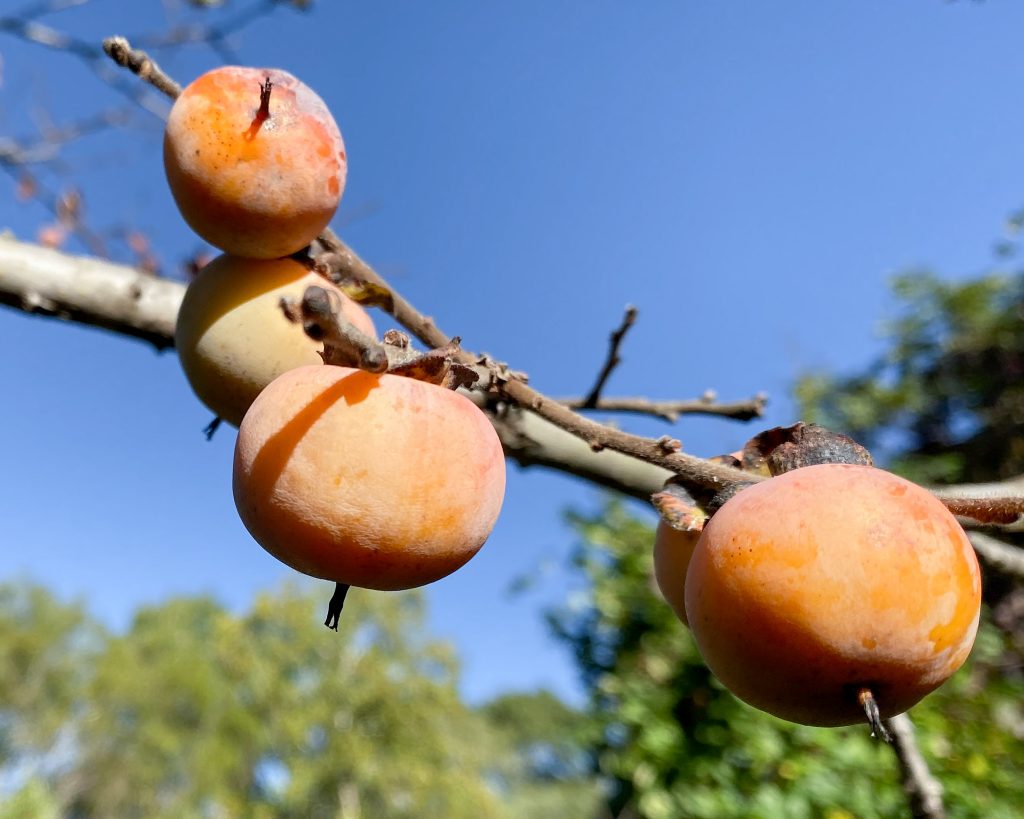
The Persimmon tree is a native tree found in the southeast United States whose tasty, seeded fruit was extensively used by Native Americans and people today. The unique flavor and texture of the persimmon fruit is appreciated in breads, custards, and puddings. Traditionally, persimmons were dried in flatten cakes, sometimes with added cornmeal. Be warned though, eating astringent, unripe fruit is an unpleasant experience you won’t soon wish to repeat.
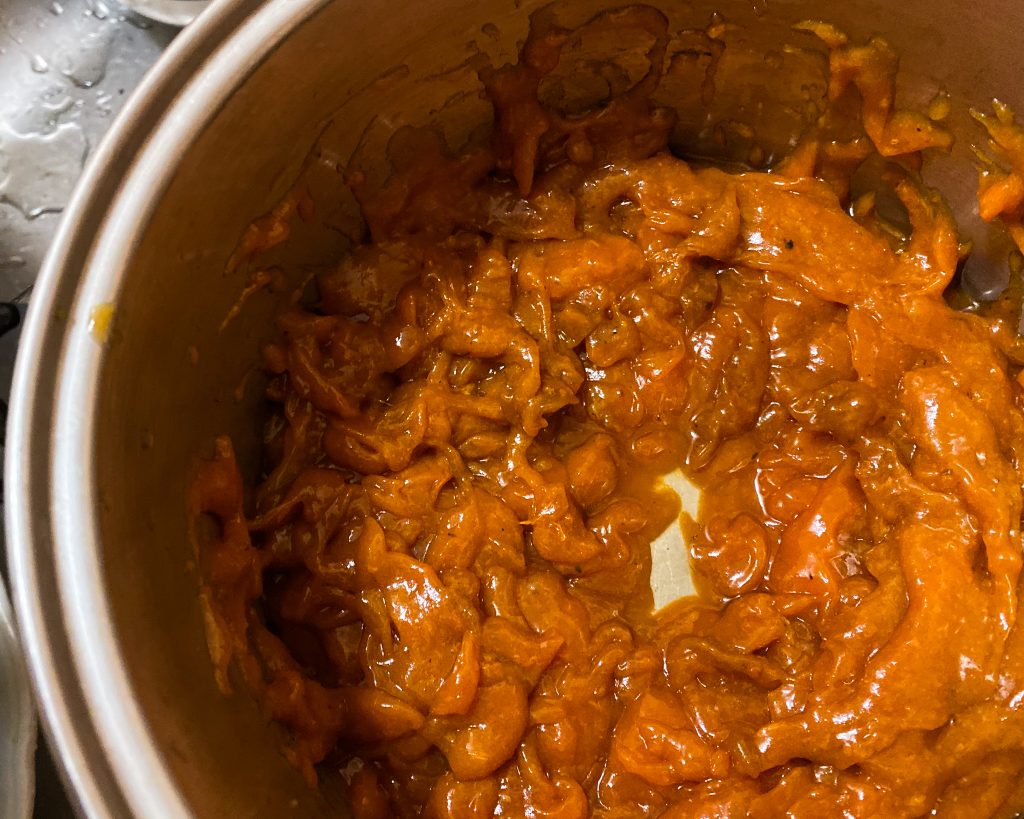
Other uses for the plant have included buttons and jewelry made from the seeds, and the hard wood has been used for golf clubs.
In addition to being appreciated by humans, the fruits are eaten by a variety of wild life, including coyotes, raccoons, opossums, and bears.
You can find persimmon trees in forests, but being a light-loving tree, they are more productive in more open woodlands. They are also common along roadsides, fence rows, and railroads. The species reproduces both sexually via seeds and asexually via root runners. Persimmons have separate male and female trees and given their ability for asexual reproduction, you will find groves of persimmons that are all female or all male.
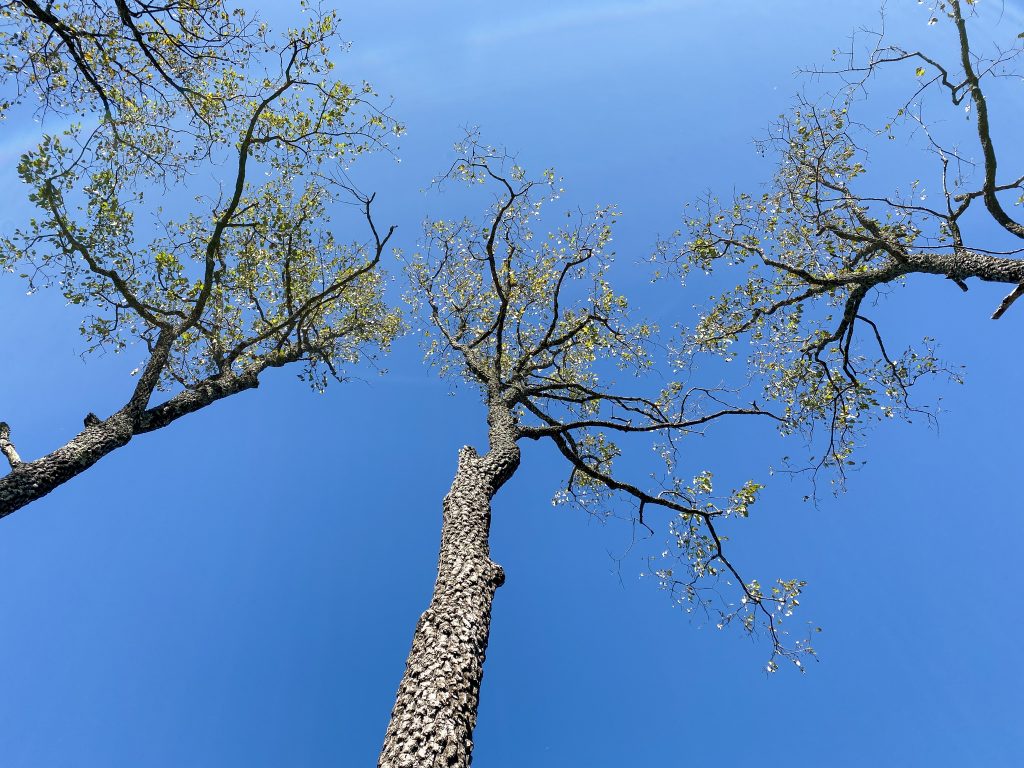
Persimmon trees are easily identified by their dark bark patterned in distinct blocks.
The leaves are simple, ovate with smooth margins.
White, four-petal flowers are produced in late spring, almost always after the last freeze. The flowers begin to turn brown as they
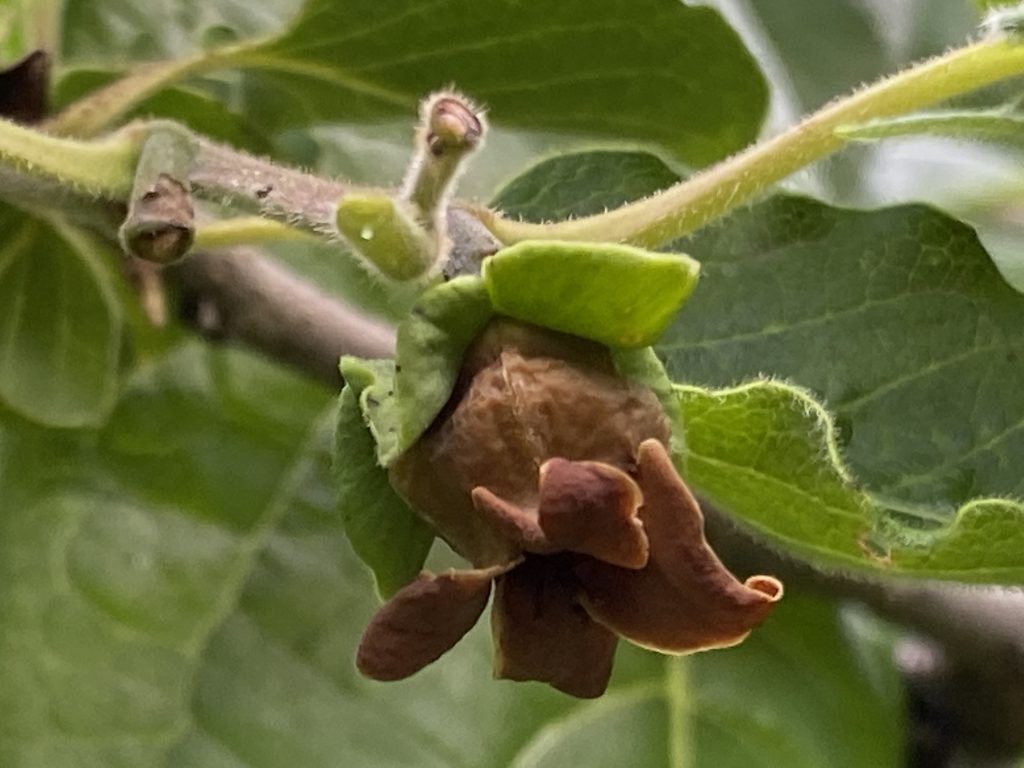
The fruits ripen in the fall to a light orange, sometimes with a bluish cast to. As the fruits ripen, the smooth skin will become slightly wrinkled..
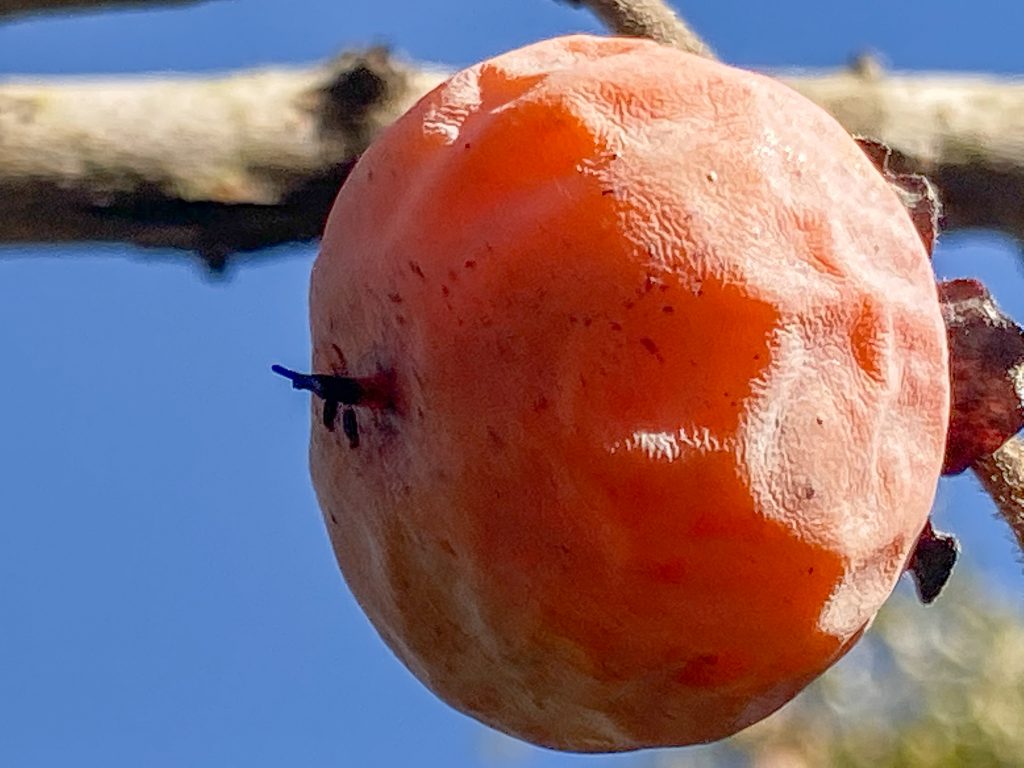
F
Persimmon fruit is important to many Native American tribes, both today and historically. As part of a ethnobotany project documenting the uses of native plants, including persimmon by the Osage Nation, we are assessing the sustainable harvest of the fruits at Pea Ridge National Military Park in Pea Ridge, Arkansas. We are using both population data and the At Risk Tool to demonstrate that persimmon fruit can be harvested in a sustainable manner.
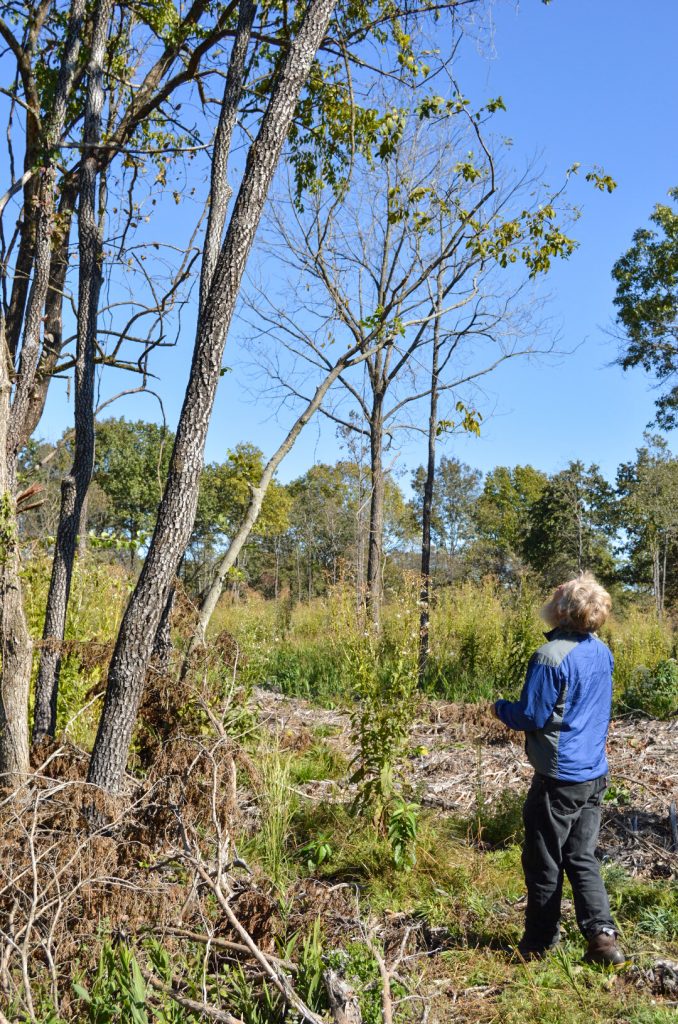
.
